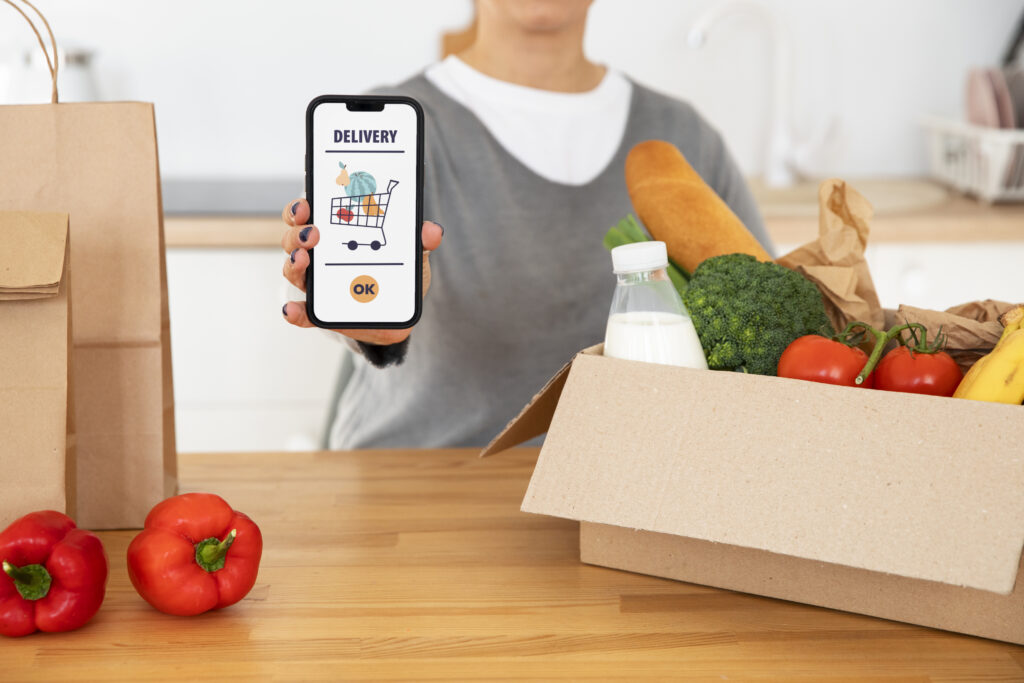
Here’s a step-by-step guide to creating a thriving Q-commerce marketplace:
1. Define Your Niche
Before diving into logistics and technology, you must first understand the market you aim to serve. Successful Q-commerce platforms often focus on high-demand, everyday products like groceries, pharmacy items, or essential household goods. The key here is speed of delivery, so targeting products that people typically need urgently works best.
2. Understanding Market Needs
The first step is understanding consumer expectations in the quick commerce space. People want convenience, speed, and reliability. However, these expectations vary by geography and product category. Market research is crucial at this stage. Identify the pain points in the current delivery experience of your target market.
What’s missing from the service levels of existing competitors?
Do people in your market want groceries within 15 minutes?
|Are there underserved local merchants that could benefit from your platform?
Answering these questions sets the foundation for building a differentiated Q-commerce marketplace.Before launching your marketplace, study your target demographics carefully:
Urban vs. Rural Expectations: In urban areas, customers may expect delivery within minutes, while rural areas may have more flexibility in time but focus more on availability.
Category Demand: Groceries, pharmaceuticals, and essential goods are typically the highest movers in Q-commerce. Focus on categories that require quick delivery and explore niche opportunities like local specialties, fresh produce, or specific ethnic foods that might not be easily available elsewhere.
3. Craft a Seamless Customer
Experience The core of Q-commerce success lies in providing a frictionless, user-friendly experience that keeps customers coming back. This involves:
Mobile-first design: Most Q-commerce orders come from mobile devices, so your app or site must be intuitive, responsive, and easy to navigate.
User-friendly interface: Your online marketplace should be easy to navigate, with a clear and simple checkout process.
Speed and accuracy: Delivering the right products, in the right condition, in the shortest possible time.
Personalization: Leverage data to provide personalized product recommendations and tailored promotions.
Real-time tracking: Customers expect visibility into the status of their orders. Real-time GPS tracking of deliveries is now the standard and should be incorporated from the start.
Multiple payment options: The more convenient the payment process, the more conversions you’ll drive.
Ensuring a smooth experience, from browsing to checkout to delivery updates, creates trust and loyalty, which is critical in a space where consumers expect instantaneous service.
4. Leveraging Technology for Seamless Operations
A quick commerce marketplace thrives on technology. From the moment a customer places an order to the final doorstep delivery, each stage must be finely tuned and automated to reduce friction.
Inventory Management: Real-time inventory visibility is the backbone of quick commerce. A successful marketplace must maintain an updated inventory to avoid stockouts or over-promising to customers. Using AI-powered forecasting tools can help predict demand spikes, enabling better stock replenishment.
Order Processing & Fulfillment: To deliver within tight timeframes, order processing must be streamlined. Automated workflows from order acceptance to dispatch ensure minimal delays. Integrating smart routing software that factors in traffic, weather, and rider availability is crucial for optimizing delivery times.
Delivery Management: Ultra-fast delivery requires efficient logistics. Partnering with multiple delivery providers, including local courier networks and independent drivers, can give your marketplace flexibility. Integrating a route optimization tool can cut delivery times and costs.
Customer Experience: Every interaction with your platform must be intuitive and frictionless. From user-friendly apps to transparent tracking systems that keep customers informed about their order status, a well-thought-out user experience can set your marketplace apart.
5. Building Relationships with Suppliers and Partners
Quick commerce often relies on a hyper-local approach, sourcing products from vendors and suppliers within a small radius of your customer base. Establishing strong relationships with suppliers is vital. Offer them value by providing insights into demand trends, allowing them to better manage their stock levels. Transparency in terms of payment terms, product returns, and feedback loops builds long-lasting partnerships that benefit both your marketplace and the suppliers.
Equally important is the relationship with logistics partners. Ensuring that your delivery teams, whether in-house or outsourced, have clear expectations and are equipped with the right tools, such as real-time route planning, is essential for operational success.
6. Customer Acquisition and Retention Strategies
Personalization: Use data to offer personalized recommendations and promotions, increasing conversion rates and basket sizes.
Loyalty Programs: Implement loyalty programs to encourage repeat purchases, offering perks like free deliveries, discounts, or exclusive products for loyal customers.
Marketing and SEO: Optimize for local search and invest in paid campaigns targeting immediate needs (e.g., “grocery delivery in 30 minutes”). Engage customers via social media and email marketing.
7. Data-Driven Decision Making
Data is the fuel that powers a quick commerce marketplace. From tracking delivery times to analyzing customer buying behavior, a successful business constantly collects and interprets data to improve operations.
Implement predictive analytics to anticipate customer demand patterns and align inventory accordingly. Real-time data on delivery performance helps in identifying bottlenecks in the logistics chain, allowing for quick adjustments. Consumer data can also be used to segment your audience and offer personalized experiences that drive loyalty and increase average order values.
8. Continuous Innovation and Adaptability
Keep Innovating: The quick commerce space is fast-paced, and standing still can be detrimental. Continuously seek out new technologies and trends to stay ahead of competitors.
Adapt to Customer Feedback: Listen to customers and rapidly iterate on your offerings. Success in quick commerce often hinges on how quickly you can adapt to changing customer expectations.
9. Sustainability in Quick Commerce
Sustainability is becoming a defining factor in consumer choice. A successful quick commerce marketplace cannot ignore the environmental impact of its operations. From using electric vehicles for delivery to offering eco-friendly packaging options, integrating sustainable practices into your operations will not only appeal to the eco-conscious consumer but also reduce your business’s carbon footprint.
Additionally, reducing food waste in grocery quick commerce can be achieved by creating partnerships with local food banks or organizations that can take unused perishable items.
10. Creating a Growth Strategy
Once your quick commerce marketplace is operational, the focus should shift to scaling and growth. This involves expanding to new cities or regions, building out new product categories, and potentially offering new services like subscription models for frequently purchased goods.
Growth also depends on effective marketing. Influencer collaborations, social media campaigns, and referral programs can help create buzz and attract new users. Offering incentives for first-time buyers, or discounts for customers who refer friends, can increase your user base rapidly.
Furthermore, growth should be sustained with strong customer retention strategies. A loyalty program, offering rewards for frequent purchases, is one way to keep your users engaged and returning to your marketplace.
Conclusion: Prioritize Consistency and Innovation
The path to a successful online quick commerce & E-commerce marketplace is one that demands operational excellence, technological innovation, and an unwavering focus on customer satisfaction. While rapid scaling can be tempting, maintaining quality at every stage of the customer journey is what will ultimately set you apart.A robust infrastructure, strong partnerships, and a data-driven approach will ensure that your marketplace isn’t just meeting the current demand but is also prepared to adapt and grow with the evolving quick commerce landscape. With this strategy, your marketplace can thrive in this fast-paced, competitive sector.
